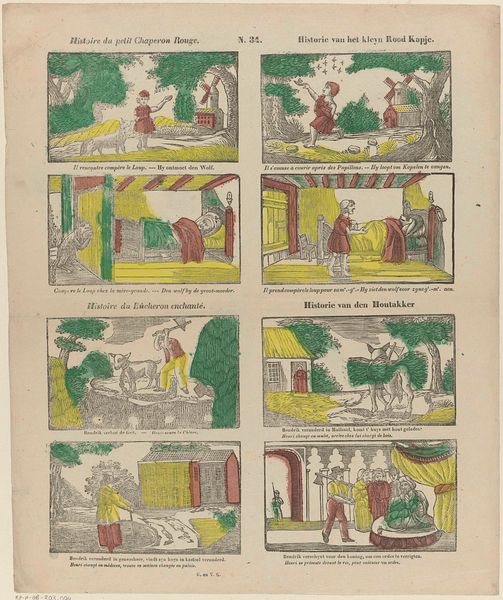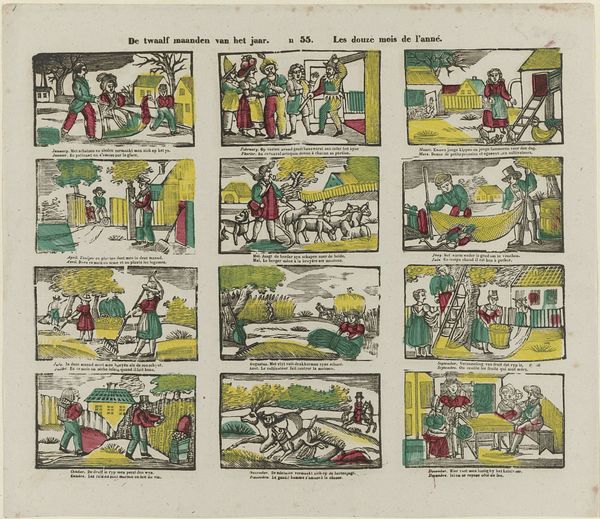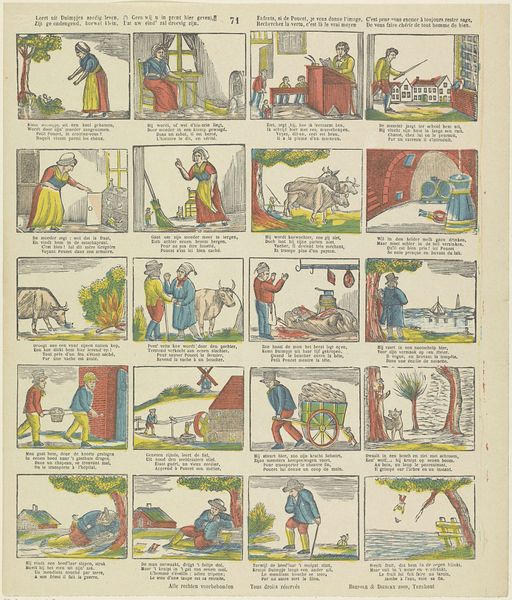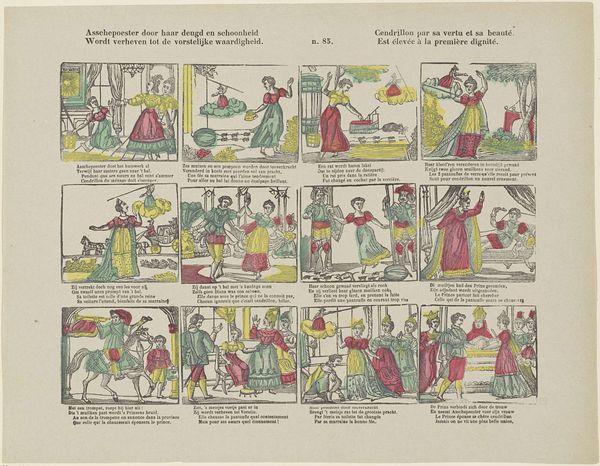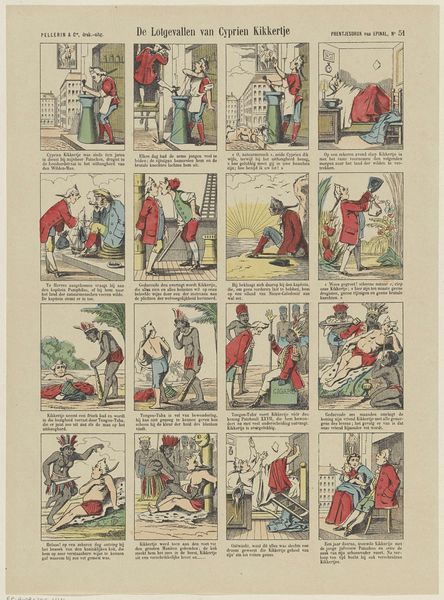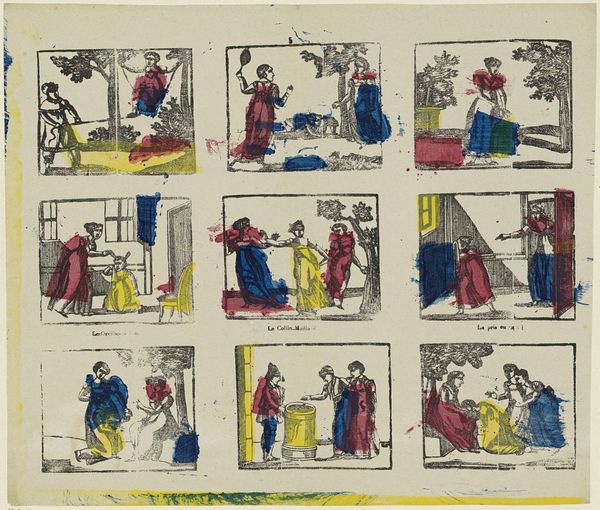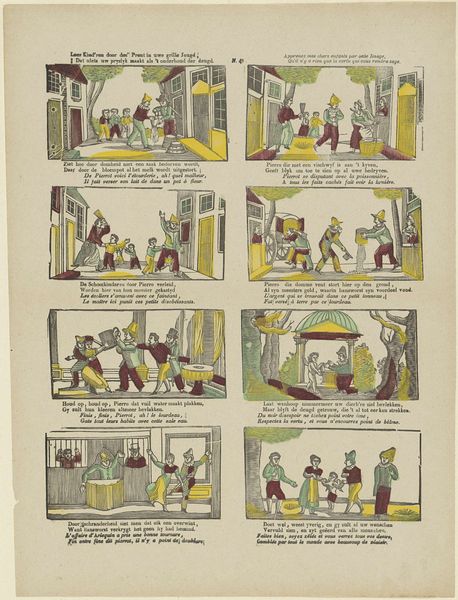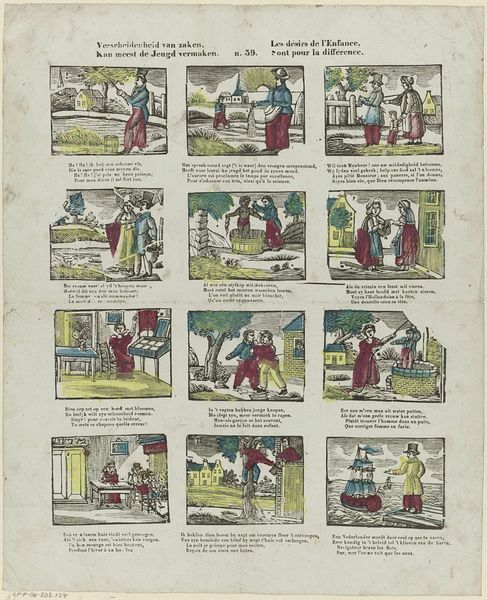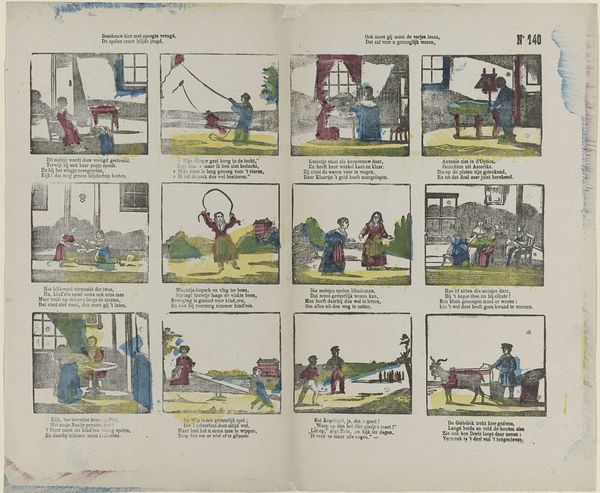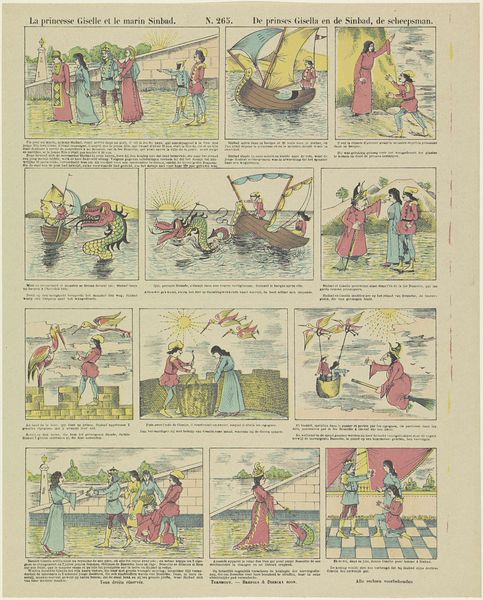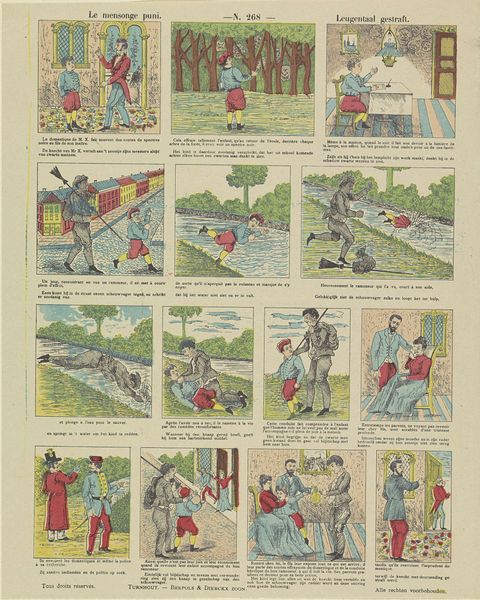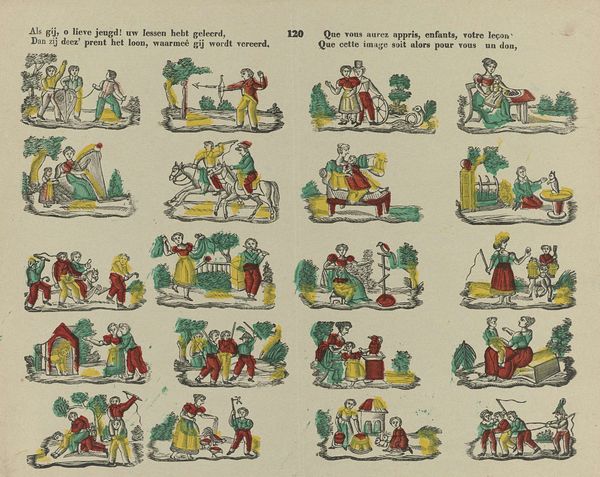
De twaalf maanden van het jaar / Les douze mois de l'année 1800 - 1833
0:00
0:00
philippusjacobusbrepols
Rijksmuseum
graphic-art, print, etching, woodcut
#
graphic-art
#
comic strip sketch
#
narrative-art
#
comic strip
# print
#
etching
#
woodcut
#
line
#
genre-painting
Dimensions: height 320 mm, width 371 mm
Copyright: Rijks Museum: Open Domain
Editor: So, this print from the Rijksmuseum is called "The Twelve Months of the Year," created sometime between 1800 and 1833 by Philippus Jacobus Brepols. It looks like a little comic strip, with each scene depicting a different month. I find the folksy simplicity of it quite charming. What stands out to you when you look at this work? Curator: Charming indeed! You know, what grabs me is this lovely collision of the practical and the whimsical. It's like peeking into a beautifully illustrated almanac. We see daily life, farming, socializing – all rendered with such directness, yet there’s this underlying sense of celebratory ritual. Editor: Ritual? Tell me more about that. Curator: Well, think about it. Each month has its dedicated activity – fishing in June, harvesting in August, sitting around the fire in December. It highlights our connection to the seasons, something easily lost now, wouldn't you agree? This feels deeply ingrained in the community and their way of seeing time. It’s less about ticking clocks and more about the cyclical rhythms of nature. I'm also quite fascinated by the direct use of color. How do you feel about the use of colour? Editor: I think it reinforces that folk-art feel. The limited palette adds to its straightforward charm. But, how much information can we really glean about 19th-century life from something so… idealized? Curator: That's the crux of it, isn't it? Art is never a purely objective mirror. It's about the artist's perspective, what they choose to show, and even what they leave out. Even in these small genre paintings. Maybe that hint of "idealized" gives us an insight into the values and hopes of the people who enjoyed it. Editor: I never thought of it that way – that the idealization itself says something important. Thanks! Curator: My pleasure! Art has a unique ability to open these conversational portals to the past. Now I wonder what Brepols would think if he could join us in this museum.
Comments
No comments
Be the first to comment and join the conversation on the ultimate creative platform.
